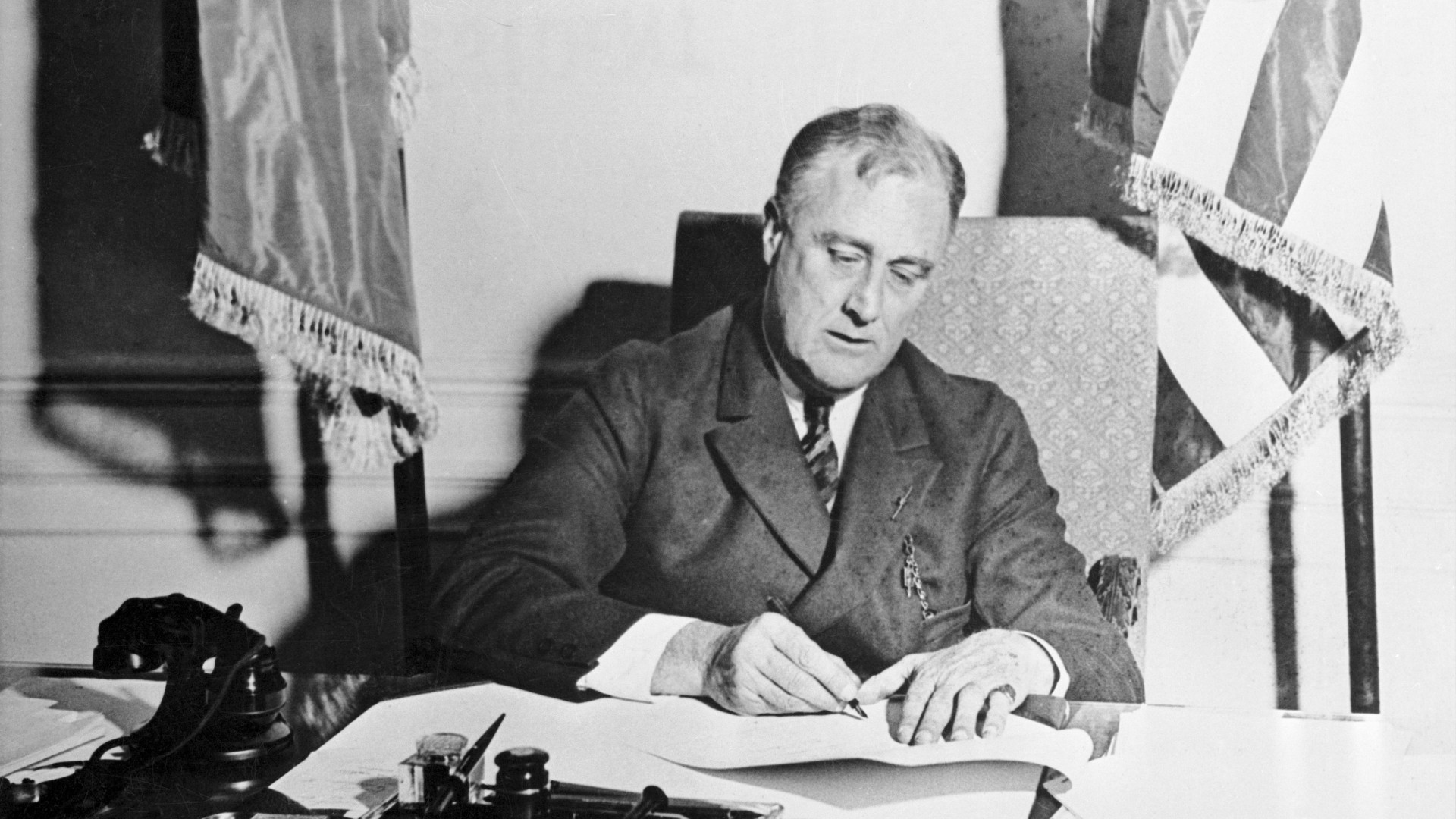Democrats Cant Win Again the Will Detroy the U.d.
When and why did Democrats and Republicans switch platforms?

The Republican and Democratic political parties of the United States didn't always stand for what they do today. The more than liberal Democrats, traditionally represented by the color blue, and the right-wing Republicans, past the colour red, each have a defined set up of belief systems, but these were once very different.
What did the Republicans and Democrats originally believe?
During the 1860s, Republicans, who dominated northern states, orchestrated an ambitious expansion of federal ability, described by the Free Dictionary as "a system of government in which power is divided betwixt a central authority and constituent political units." This helped to fund the transcontinental railroad, the state university system and the settlement of the Due west past homesteaders, and instating a national currency and protective tariff. The Democrats, who dominated the Southward, opposed those measures. Indeed, according to the author George McCoy Blackburn ("French Newspaper Stance on the American Ceremonious War ," (Greenwood Printing, 1997) the French paper Presse stated that the Republican Doctrine at this fourth dimension was "The nigh Liberal in its goals but the most dictatorial in its means."
Post-Civil War and Franklin Roosevelt

After the United States triumphed over the Confederate States at the end of the Ceremonious War, and under President Abraham Lincoln, Republicans passed laws that granted protections for Black Americans and advanced social justice (for example the Civil Rights Act of 1866 though this failed to end slavery). Again Democrats largely opposed these apparent expansions of federal power.
Sounds like an alternating universe? Fast forward to 1936.
Democratic President Franklin Roosevelt won reelection that year on the strength of the New Deal. This was a ready of reforms designed to assistance remedy the furnishings of the Great Depression, which the FDR Presidential Library and Museum described as: "a severe, world -wide economical disintegration symbolized in the Usa by the stock market crash on "Blackness Thursday," October 24, 1929." The reforms included regulation of financial institutions, the founding of welfare and pension programs, infrastructure development and more. It was these measures that ensured Roosevelt won in a landslide against Republican Alf Landon, who opposed these exercises of federal ability.
So, one-time between the 1860s and 1936, the (Democratic) political party of modest authorities became the party of big government, and the (Republican) party of big government became rhetorically committed to curbing federal power.

How did this switch happen?
Eric Rauchway, professor of American history at the University of California, Davis, pins the transition to the plough of the 20th century, when a highly influential Democrat named William Jennings Bryan (all-time known for negotiating a number of peace treaties at the end of the Beginning World State of war, according to the Function of the Historian) blurred political party lines by emphasizing the government's part in ensuring social justice through expansions of federal power — traditionally, a Republican stance.
But Republicans didn't immediately adopt the reverse position of favoring limited regime.
Related: 7 corking congressional dramas
"Instead, for a couple of decades, both parties are promising an augmented federal government devoted in various ways to the cause of social justice," Rauchway wrote in an archived 2010 web log post for the Chronicles of College Education. Merely gradually did Republican rhetoric drift toward the counterarguments. The party's modest-government platform cemented in the 1930s with its heated opposition to Roosevelt's New Deal.
But why did Bryan and other plow-of-the-century Democrats offset advocating for big regime?
Large Regime
According to Rauchway, they, like Republicans, were trying to win the West. The admission of new western states to the union in the post-Civil State of war era created a new voting bloc, and both parties were vying for its attention.
Related: Busted: 6 Ceremonious State of war myths
Democrats seized upon a style of ingratiating themselves to western voters: Republican federal expansions in the 1860s and 1870s had turned out favorable to big businesses based in the northeast, such every bit banks, railroads and manufacturers, while small-scale-fourth dimension farmers similar those who had gone westward received very fiddling.
Both parties tried to exploit the discontent this generated, by promising the general public some of the federal help that had previously gone to the business sector. From this point on, Democrats stuck with this opinion — favoring federally funded social programs and benefits — while Republicans were gradually driven to the counterposition of hands-off regime.
From a business organisation perspective, Rauchway pointed out, the loyalties of the parties did not really switch. "Although the rhetoric and to a degree the policies of the parties do switch places," he wrote, "their core supporters don't — which is to say, the Republicans remain, throughout, the party of bigger businesses; information technology's just that in the before era bigger businesses want bigger government and in the later era they don't."
In other words, earlier on, businesses needed things that only a bigger government could provide, such as infrastructure development, a currency and tariffs. Once these things were in place, a small, easily-off regime became better for business.
Originally published on Live Scientific discipline on Sept. 24, 2012. This article was updated on Dec. 14, 2021.
Source: https://www.livescience.com/34241-democratic-republican-parties-switch-platforms.html
0 Response to "Democrats Cant Win Again the Will Detroy the U.d."
Postar um comentário